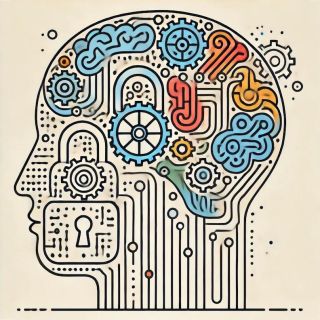Cognition
The Cognitive Interface—Reshaping Our Computer Interactions
Unlocking human potential through the technology interface of pure thought.
Posted June 17, 2024 Reviewed by Michelle Quirk
Key points
- The LLM cognitive interface shifts from facts to thoughts as it unlocks human cognition.
- This interface enables iterative engagements, amplifies intellect, and fosters creativity and innovation.
- This interface promises a symbiotic human-machine future of unprecedented advancement and discovery.

The evolution of information access and interaction has been a transformative technological and human journey, from Gutenberg's printing press to Google's search engine. As we stand at the beginning of the Cognitive Age, large language models (LLMs) are not just catalyzing a shift from transactional interactions to iterative engagements; they are introducing a fundamentally new computer interface—the cognitive interface.
The Emergence of the Cognitive Interface
The history of human-computer interaction has been marked by significant milestones. From the early days of punch cards and keystrokes to the revolutionary graphical user interface (GUI) pioneered by Xerox PARC and popularized by Steve Jobs, each advancement has redefined how we interact with machines. Now, with the advent of LLMs, we are witnessing the birth of the cognitive interface—a language-based, cognitively responsive design that adapts to the user's needs and context.
A Fundamental Shift in Interface Technology
This cognitive interface represents a fundamental shift in computer interface technology. Unlike traditional interfaces that rely on explicit commands and predetermined actions, the cognitive interface leverages the power of natural language processing and machine learning to understand and respond to user intent. This dynamic interaction allows for a more intuitive, human-like engagement with technology, making it accessible to a broader range of users.
From Words to Facts to Ideas
The cognitive interface is not merely a change in how we interact with computers; it is a pivotal component of the evolution. Gutenberg's printing press democratized access to words, while the Internet revolutionized the dissemination of facts. Now, LLMs are unlocking the realm of ideas. The cognitive interface enables users to engage with machines on a conceptual level, moving beyond the retrieval of information to the exploration and refinement of thoughts.
Amplifying Human Intellect
The cognitive interface amplifies human intellect by leveraging the vast knowledge and computational power of LLMs. By processing and synthesizing information, identifying patterns, and generating insights, LLMs augment our cognitive capabilities. This symbiotic relationship between humans and machines enhances our ability to think critically, solve complex problems, and make informed decisions.
Fostering Creativity and Innovation
The iterative nature of the cognitive interface fosters creativity and innovation by providing a platform for collaborative ideation. Through dynamic conversations with LLMs, users can explore diverse perspectives, challenge assumptions, and generate novel solutions. This iterative process mimics the way ideas evolve and mature through human dialogue, enabling users to refine their thoughts and develop innovative concepts.
Think, Act, Become—Our Cognitive Future
The cognitive interface will help redefine the boundaries of human-computer interaction. By leveraging the power of natural language and adaptive, context-aware responses, the cognitive interface will make technology more accessible, intuitive, and empowering. These fundamental shifts will have far-reaching implications across industries, from education and health care to business and creative pursuits.
By shifting from transactional interactions to iterative engagements and enabling the exploration of ideas, the cognitive interface unlocks new realms of thought and understanding. In this new and transformative phase, the Cognitive Age promises a future where the symbiotic relationship between humans and machines propels us toward new heights of creativity, innovation, and discovery. This exciting new era of cognitive empowerment heralds unprecedented opportunities and advancements, driving us toward a brighter, more engaged, and perhaps even more enlightened future.


